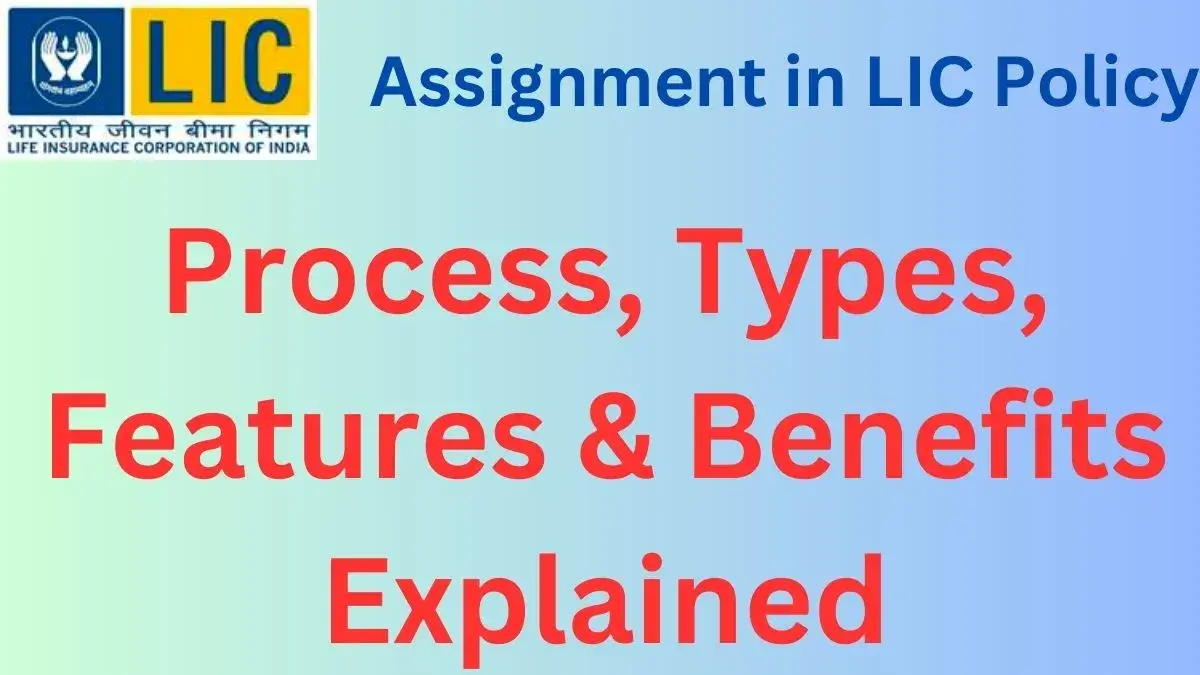The concept of Assignment in LIC Policy involves transferring the title, rights, and interest on assets or property from one person to another. This process, known as assignment, is commonly used to provide security against loans. Here is a detailed overview of assignment in LIC policies, including its features, types, required documents, and process.
What is Assignment?
Assignment is the legal process of transferring ownership and rights over an asset or property from one person to another. In the context of insurance policies, assignment ensures that the benefits and ownership rights are transferred to another party.
Key Terms:
- Assignor: The policyholder who transfers the title of the policy is known as the assignor.
- Assignee: The individual or institution to whom the policy is transferred is referred to as the assignee.
Features of Assignment in LIC Policy
- Eligibility: Assignment can only be done after the purchase of a policy.
- Applicability: Assignment is applicable to all insurance plans except pension plans.
- Ownership Requirement: The assignor must have complete ownership of the policy. If the life assured is a minor or is not the proposer, they cannot assign the policy.
- Assignee’s Rights: Upon assignment, the assignee obtains full ownership and rights over the policy, including death benefits. They can also surrender the policy.
- Scope: Assignment can be made to an individual or an institution.
- Insurer’s Role: The insurer must record the assignment in their records.
- Irrevocability: Once made, an assignment cannot be canceled. However, a policy can be re-assigned in the name of the life assured.
- Fresh Nomination: After assignment, a new nomination must be made for the policy.
Types of Assignment
There are two types of assignments:
1. Conditional Assignment:
- Rights, title, and interest in the policy revert back to the assignor upon fulfillment of certain conditions.
- Conditions Include:
- The assignee’s death before the assignor’s death.
- Survival of the assignor until the policy’s maturity date.
- Full repayment of the loan.
- If the conditions are met, the policy’s ownership automatically reverts to the assignor.
2. Absolute Assignment:
- Rights, title, and interest of the policy are permanently transferred to the assignee.
- This type of assignment is typically done for valuable consideration. The policy becomes part of the assignee’s estate upon their death.
Documents Required for Assignment in LIC Policy
- Original policy bond (for pasting endorsement).
- KYC documents of both assignor and assignee.
- Notice of assignment.
- Assignment Form 3855.
- Re-assignment Form 3848 (if applicable).
Process of Assignment in LIC Policy
Assignment can be executed through two methods:
1. Endorsement on the Policy Document:
- No stamp duty is required.
- The assignment form, along with the policy, must be signed by the assignor, assignee, and a witness.
2. Separate Assignment Deed:
- Requires payment of stamp duty.
The assignment becomes effective only when it is registered with the insurer. The date on which the notice of assignment is delivered to the insurer determines the priority of all claims under the transfer or assignment.


Assignment in LIC policy is a crucial process, especially for securing loans or transferring policy benefits. By understanding its features, types, and processes, policyholders can ensure proper compliance and safeguarding of their interests.


FAQs
1. What is the meaning of assignment in LIC policies?
Assignment refers to the transfer of title, rights, and interest in an LIC policy from one person to another for purposes like securing a loan.
2. What are the types of assignment in LIC policies?
There are two types: Conditional Assignment and Absolute Assignment. The rights and conditions differ in both.
3. Who can assign an LIC policy?
Only the policyholder with complete ownership can assign the policy. Minors or non-policy proposers cannot assign it.
4. Can an assignment in LIC policy be canceled?
No, once an assignment is made, it cannot be canceled. However, the policy can be re-assigned to the life assured.
5. What documents are required for LIC policy assignment?
Required documents include the original policy bond, KYC documents, assignment notice, and assignment/re-assignment forms.
6. How does conditional assignment differ from absolute assignment?
Conditional assignment reverts the rights back to the assignor under specific conditions, whereas absolute assignment permanently transfers all rights.



